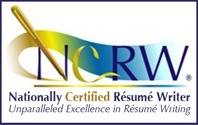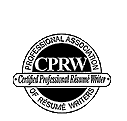- Home
- Blog
- Free Evaluation & Quote
- Services
- Qualifications
- Testimonials
- Sample Resumes
- Chief Financial Officer – Before
- Chief Financial Officer – After
- Vice President Sales
- Sales and Marketing
- Chief Executive Officer / COO
- Chief Operating Officer
- C-Level Executive
- Healthcare CFO – Before
- Healthcare CFO – After
- Global E-Commerce and E-Business
- Chief Information Officer
- IT Executive
- Human Resources – Before
- Human Resources – After
- Contact Us
- Home
- Blog
- Free Evaluation & Quote
- Services
- Qualifications
- Testimonials
- Sample Resumes
- Chief Financial Officer – Before
- Chief Financial Officer – After
- Vice President Sales
- Sales and Marketing
- Chief Executive Officer / COO
- Chief Operating Officer
- C-Level Executive
- Healthcare CFO – Before
- Healthcare CFO – After
- Global E-Commerce and E-Business
- Chief Information Officer
- IT Executive
- Human Resources – Before
- Human Resources – After
- Contact Us
5 Tips for Preventing Age Bias in Your Executive Resume & LinkedIn Profile
January 12, 2015 By Martin Weitzman Comments are Off LinkedIn, Networking, Over 50, Recruiters, Social Media, Your Career
{Click here to read the original article on Careerrocketeer.}
Back in the job market for an executive role? You may have encountered (or wondered about) potential age discrimination when putting yourself “out there” for an executive job search.
If you find yourself experiencing rejection in your job applications, the possibility of age discrimination may seem all too real.
Yet, it’s possible that you’re actually CALLING attention to your age – more so that your leadership qualifications.
Bottom-line, focusing on your executive brand will make the biggest difference to employers. This is particularly true if your work history includes the leadership skills valued in today’s market, such as cost control, team leadership, fiscal stewardship, contract negotiations, and technology expertise.
Consider these 5 ways to get a better reception from employers – and create an “age-proof” executive resume and LinkedIn Profile – if you believe age is working against you:
1 – Use the summarization technique to display your past leadership roles.
Most executives have held increasingly challenging roles at Director, VP, or SVP levels in the past, with career histories extending past the 20-year (or 30-year) mark.
While the career progression itself is important, here’s what employers really want to know: How often have you been promoted? What type of team, country, or P&L authority did you hold? What results did you achieve – and how did these results magnify over time?
In this example of an international CEO and President resume, the main focus is on profit results. With several infographics and charts, this executive’s personal brand message reflected strong cost and revenue improvements in every position.
At the end of the resume, however, earlier positions were shown with no dates—even though specific achievements were listed for these past roles. As a result, the candidate’s age is inferred, but not made obvious from the resume.
2 – Add earlier experience under the last job in your LinkedIn Profile.
While you may have taken steps to craft an executive resume that reflects your currency in the job market, how about your LinkedIn Profile?
The same way your leadership resume benefits from an age-positive strategy, you’ll need similar techniques on LinkedIn.
For example, your last job entry can contain several extra lines that spell out early-career work history:
** Additional Experience includes: Captain, U.S. Air Force: Promoted to high-ranking officer, based on ability to inspire leadership qualities, handle critical missions, and develop junior staff.
This technique allows you to benefit from the keyword hits on the previous positions (such as military experience, which is valued at many employers), without listing dates.
3 – Show your progression (important if your career was spent at a single employer).
Even if you’ve come through the ranks at a single employer for the past 20 to 30 years, hiring authorities are mostly interested in fresh, relevant experience.
Therefore, your last 3-5 positions at a VP, Director, or C-suite level should be highlighted as much as possible in your leadership resume – removing the focus from earlier roles.
This example of a CEO resume shows how to tell a story of progressive responsibility, even when 20+ years of experience are tied into a single employer.
Note that earlier, non-leadership roles are only evident from the overall date range, without details that would detract from the executive branding message.
4 – Be age-aware in crafting your Executive Summary.
A Professional Profile or Summary (on either your resume or LinkedIn Profile) must convey much more important details than years of experience.
Yet, many resumes tout “more than 20 years of experience” as a qualifier.Don’t resort to this technique!
Write your Summary with branded and power-packed language specific to the job you seek, rather than calling out your longevity, as in this example for a COO:
“Strategic & operational executive offering land development, real estate investment, master planning, and turnaround expertise. Negotiator and advisor to developments of significant environmental, community, and financial impact; accustomed to addressing Boards and stakeholders.”
5 – Maintain your focus on relevant facts, such as degrees (but not dates).
Even on your LinkedIn Profile, dates are not required for degree programs. (When entering your degree into LinkedIn, just skip the prompt to add dates of your attendance.)
In some fields such as engineering, degrees can be used to eliminate leadership candidates from consideration because the training is considered outdated.
If you’re unsure whether the graduation year on your resume and Profile is prompting age bias, try removing it – and note any differences in responses from employers.
Remember – employers are mostly focused on the need for adept leaders who can solve their business problems and maintain current knowledge.
For best results in your executive job search, showcase your ability to deliver results in times of mergers, industry changes, and cost-cutting, with less emphasis on the timing of your career milestones.
Comments are closed.
Testimonials




C-Level Resume Writer (CEO)
Chief Operating Officer (COO) resumes
Chief Technology Officer (CTO) resumes
Chief Information Officer (CIO) resumes
Chief Nursing Officer (CNO) resumes
Chief Security Officer (CSO) resumes
Chief Marketing Officer (CMO) resumes
Chief Financial Officer (CFO) resumes
Senior Financial Director resumes
Vice President, Sales resumes
Supply Chain Executive resumes
Technology Vice President resumes
Business Intelligence Executive resumes
IT Director resumes
Executive Vice President (EVP) resumes
Human Resources (HR) VP/Director resumes
Marketing Director resumes
Vice President, Bank Operations resumes
Operations Director resumes
Media Relations Director resumes
Land Developer resumes
Vice President of Investments resumes
Network Operations Director resumes
Consulting Practice Director resumes
Operations Director resumes
IT Manager resumes
Program Director resumes
Territory Sales Director resumes
Communications Director resumes
Hospice Director resumes
General Manager resumes
Business Development Manager resumes
Retail Operations Manager resumes
Product Manager resumes
Restaurant General Manager resumes
Biotech & Medical Device resumes
Regional Sales Manager resumes
Corporate Training Manager resumes
Director, Non Profit Organizations resumes
Corporate Attorney resumes
General Counsel resumes
Corporate Counsel resumes
Wall Street resumes
Investment Industry resumes
Banking Industry resumes
Automotive resumes
Automotive Industry Resume Writer
Investment Industry Resume Writer
Wall Street Resume Writing Services
Attorney Resume Writing
Corporate Attorney Resume Writing
Attorney Resumes
Sales Resume Writing
Pharmaceutical Sales resumes
